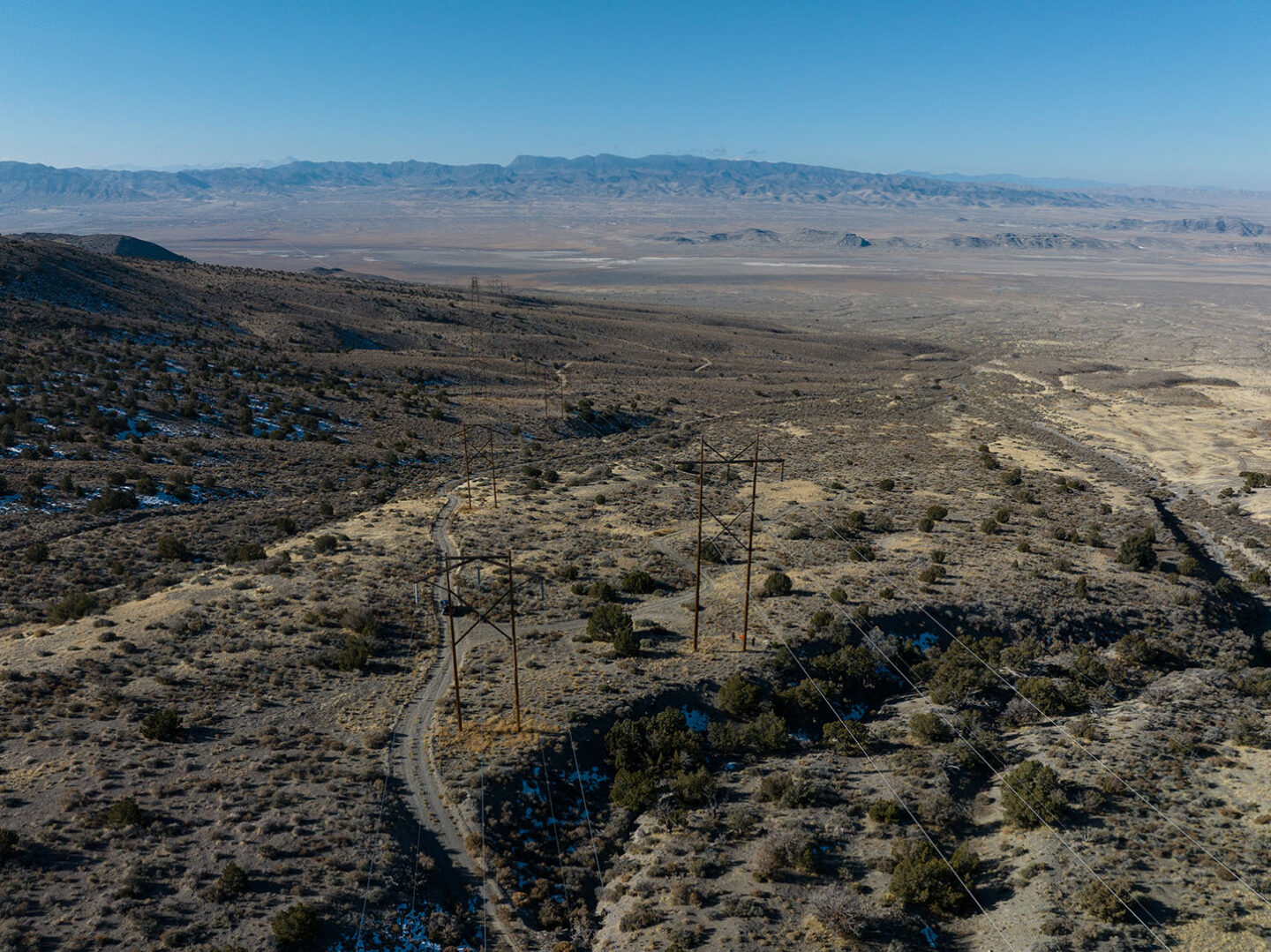The Bureau of Land Management (BLM) is seeking public input on the proposed Cross-Tie Transmission Project, a 214-mile proposed transmission line between Nephi, Utah and Ely, Nevada. The line is being touted as a major step toward increasing renewable energy distribution across the Intermountain West.
SUWA supports the urgent and necessary transition to renewable energy, but it shouldn’t come at the expense of Utah’s wildest lands. Yet all of the routes being considered are expected to detrimentally impact wilderness-quality lands in the House Range of Utah’s West Desert—lands characterized by high mountain ranges, sagebrush flats, and incredible opportunities for solitude. Fortunately, there are common-sense adjustments to the proposed project that will protect these wild places.

Here are the key details:
- SUWA’s Preferred Alternative: Our preferred alternative is the proposed action as modified by Alternatives A and C, our renewable energy requirement, and wilderness-quality lands recommendation (below). Although it runs through Marjum Canyon (and in between the Notch Peak and Howell Peak Wilderness Study Areas), this route is preferred by SUWA because:
- The Cross-Tie line would be co-located with the two existing transmission lines also running through the canyon (the other proposed routes that avoid Marjum Canyon (Alternatives B and D) do not have existing lines so putting the Cross-Tie line there would result in new and greater impacts to lands proposed for wilderness designation in America’s Red Rock Wilderness Act).
- SUWA’s proposed modified alternative would result in the most co-location with existing transmission lines (approximately 72% colocated).
- It would avoid the proposed Bahsahwahbee National Monument (in Spring Valley, Nevada, northeast of Great Basin National Park).
- The Cross-Tie line would be co-located with the two existing transmission lines also running through the canyon (the other proposed routes that avoid Marjum Canyon (Alternatives B and D) do not have existing lines so putting the Cross-Tie line there would result in new and greater impacts to lands proposed for wilderness designation in America’s Red Rock Wilderness Act).
- Renewable Energy Requirement: Because the BLM, the Department of Energy (DOE) and the project proponent (TransCanyon) all tout this project as a major step toward increased renewable energy distribution, the BLM should condition its approval of the project on a guarantee and perpetual requirement that the Cross-Tie line solely transport energy derived from renewable sources.
- Despite BLM, DOE, and TransCanyon’s assertions, there are currently no enforceable guarantees in place that require the Cross-Tie line actually transport renewable energy. Indeed, in the draft environmental impact statement, the BLM acknowledges that the line may actually transport non-renewable energy.
- Conditioning approval on renewable energy distribution will ensure the project is actually aligned with the Biden administration’s Investing in America agenda and the BLM, DOE, and TransCanyon’s public statements.
- Despite BLM, DOE, and TransCanyon’s assertions, there are currently no enforceable guarantees in place that require the Cross-Tie line actually transport renewable energy. Indeed, in the draft environmental impact statement, the BLM acknowledges that the line may actually transport non-renewable energy.
- Avoiding Impacts to Wilderness-Quality Lands: As currently proposed (and even as modified by Alternatives A & C), the Cross-Tie project will cross wilderness-quality lands, including Notch Peak and Howell Peak BLM-identified lands with wilderness characteristics (LWC) units and the Notch View, Chalk Knolls, and Bullgrass Knolls citizen-proposed LWC
- However, within the project’s siting corridor and the designated energy corridor, there is room to slightly shift the proposed route such that it will minimize impacts to LWC and ARRWA. See map here.
- In addition, the BLM should require the tower structures to be as short as is technically feasible (< 100 ft) and constructed out of self-weathering steel to reduce visual impacts and blend in with the natural landscape
- However, within the project’s siting corridor and the designated energy corridor, there is room to slightly shift the proposed route such that it will minimize impacts to LWC and ARRWA. See map here.

